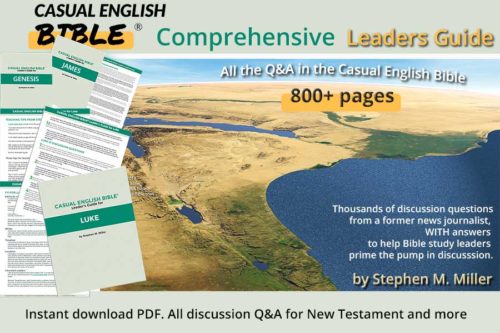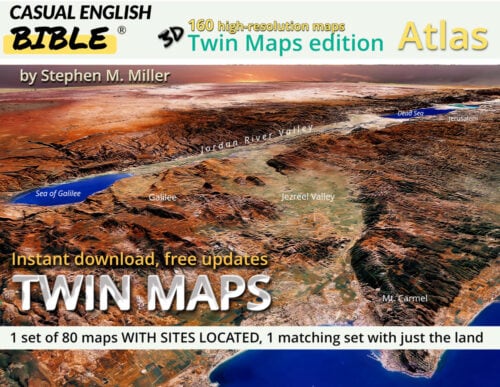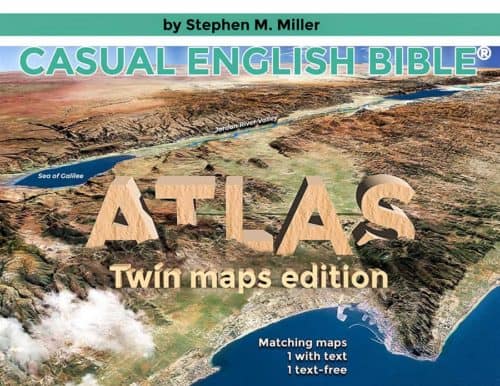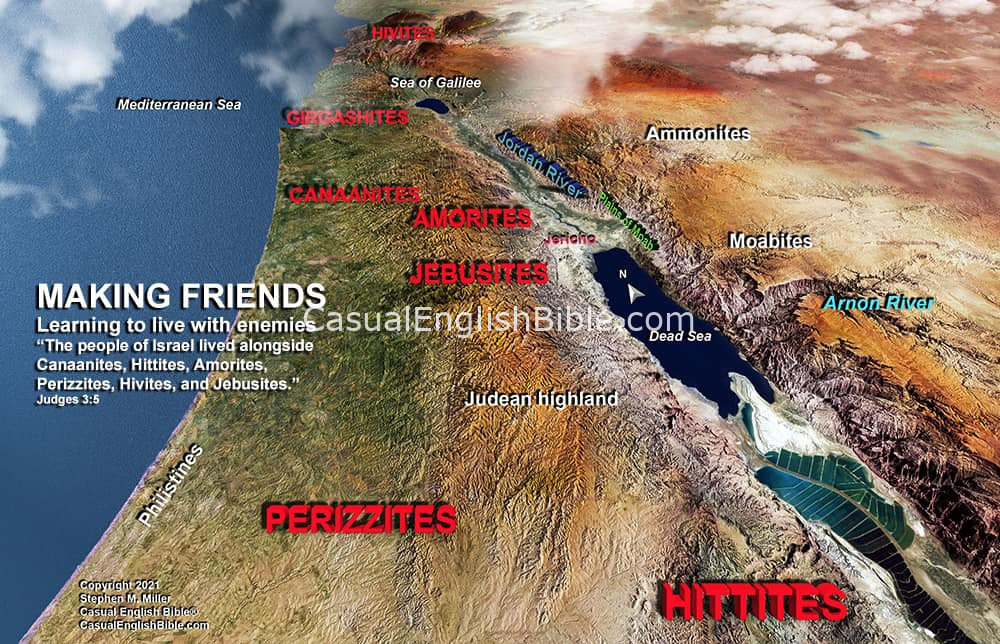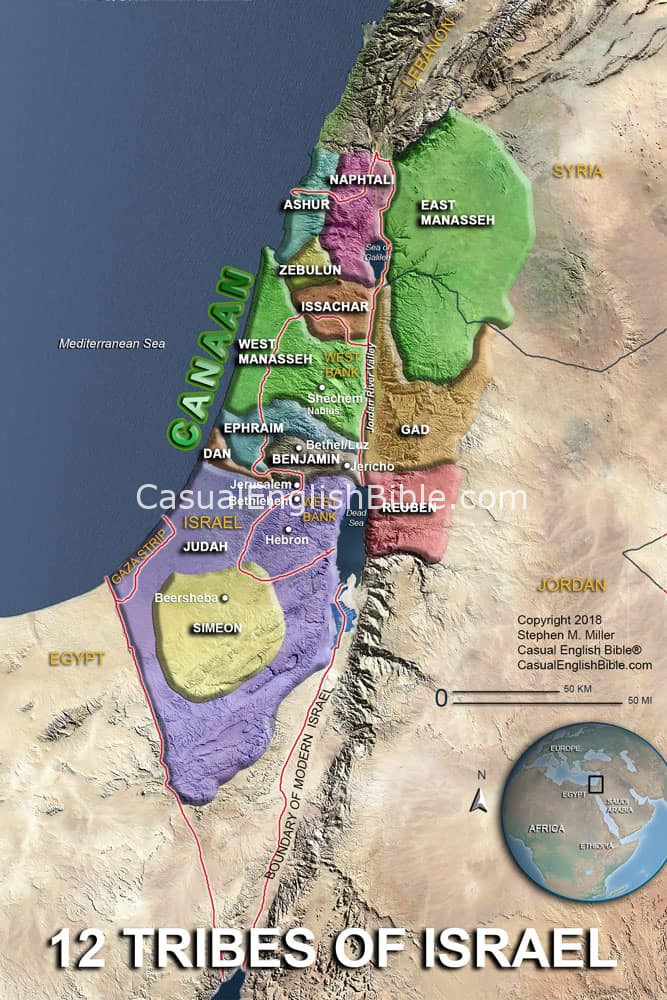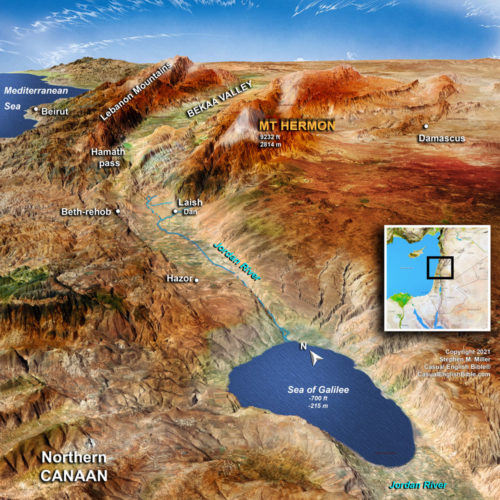Judges 3
Heroes come to Israel’s rescue
Israelites make peace with locals
1Some Israelites grew up in Canaan during peaceful times. They didn’t know what it was like to fight in a war. The LORD left some nations in Canaan to teach them how to fight. 2These nations taught one generation of Israelites after another how to fight battles. That’s why the LORD let these nations stay: 3Five Philistine rulers in their city kingdoms, [1] all the remaining people of Canaan along with people from Sidon and the Hivites who live in the Lebanon Mountains, from Mount Baal-hermon [2] to Hamath Pass. [3]4These nations would test Israel’s devotion to the LORD, and Israel’s willingness to obey the commandments he had given to their ancestors. 5So the people of Israel lived alongside Canaanites, Hittites, Amorites, Perizzites, Hivites, and Jebusites. 6Israel’s men and women married some of these people. And those nations married Israelite men and women, as well. But Israelites also started worshiping local gods.
Othniel, Israel’s first heroic leader
7Israel eventually forgot about the LORD their God. They worshiped idols of Baal and Asherah. [4] 8In response, God let a king from Aram-naharaim overpower them: King Cushan-rishathaim. [5] He oppressed and exploited Israelites for eight years. 9Israel remembered the LORD and prayed for his to help. So the LORD gave them a heroic leader to save them: Othniel. [6] He was Caleb’s nephew, son of Caleb’s younger brother, Kenaz.10The LORD’s Spirit came into him [7] and he became a leader in Israel. He assembled an army and defeated King Cushan-rishathaim of Aram. 11Israel lived in peace for the next 40 years. Then Othniel, son of Kenaz, died.
Moab collects taxes from Israel
12Israel returned to their bad habit of bad behavior. They did things the LORD said was wrong. So, the LORD gave King Eglon of Moab a boost of strength. Israel couldn’t match it because they had broken the LORD’s law. 13King Eglon joined forces with the Ammonites and Amalekites. Their coalition army overpowered Israel’s defenses and took control of the Jericho oasis community. [8]14For 18 years, Israel lived under Moab’s thumb. King Eglon of Moab controlled and taxed the Israelites. 15When the people of Israel finally called on the LORD for help, he sent them a leader to set them free. Ehud came from the tribe of Benjamin. He was left-handed and the son of Gera. Whenever Israelites sent their tax payment to King Eglon, Ehud delivered it.
Ehud’s assassination sword
16Ehud made a short sword and sharpened it on both sides. It was about a foot and a half long. [9] He tied it to his right thigh and hid it under his clothes. [10] 17Ehud delivered the tax money to King Eglon of Moab, who was incredibly fat. [11] 18Once Ehud delivered it and got back to Israel, he sent the people home who had traveled with him, carrying the tribute. 19But once he reached the statues at Gilgal, he doubled back to see the king again. He told the king, “I need to give you a secret message, your highness.” The king said, “Everyone, quiet.” That order cleared the room, leaving Ehud alone with the king.Pointed message from “God”
20The king was sitting alone in the room [12] when Ehud approached, saying, “I have a message for you from God.” The king stood.21Ehud, with his left hand, grabbed the hidden sword strapped to his right thigh. He plunged it deep into Eglon’s belly. 22Ehud drove the sword with such force that he pushed the entire blade and hilt into the king. Fat swallowed the sword, and Ehud left it where he put it. The king’s bowels emptied. 23Ehud left the room and locked the door on his way out. 24Later, when his servants came back and saw the door was locked, they said, “He must be relieving himself in the toilet.”
25They waited so long it became awkward and downright embarrassing. So, they got the key, went in, and found their king dead on the floor. [13] 26Ehud had escaped while the king’s servants waited. He passed the statues on his way back and went to Seirah. [14]
Ehud’s army crushes Moab
27When Ehud got there, he blew a horn and rallied the people in the hills of Ephraim. A militia of Israelites left the hills under Ehud’s command. 28He had told the warriors, “Follow me. The LORD is going to let us take Moab.” They marched down into the Jordan River Valley and took control of the shallow fjords that people used to cross the river. They didn’t let anyone cross during their campaign.29Israelites killed 10,000 strong and healthy Moabite men. No one escaped or survived. 30Israel conquered Moab that day and lived in peace for the next 80 years. 31Israel’s next heroic leader after Ehud was a man called Shamgar. He was Anath’s son. He killed 600 Philistines with a cattle prod. [15]
Footnotes
Philistine cities near the Mediterranean coast were Ashdod, Ashkelon, Ekron, Gath, Gaza.
Location unknown. It may have been somewhere on Mount Hermon.
The Hebrew language calls the location lebo Hamath. This could mean the city of Lebo-hamath, in Lebanon, near where the Orontes River begins at the foot of Mount Hermon and Mount Lebanon. Or it could mean “entrance into Hamath” since lebo means “entrance.” Hamath was the name of a gateway into a mountain pass near Mount Hermon and Mount Lebanon.
Baal and Asherah in the Hebrew language here are both plural. That might be because there were different worship centers, cults, and methods for worshiping these gods. Baal of Peor, for example, was the name of the Baal that people worshiped on Mount Peor in Moab. Baal of Peor was apparently a local representation of him. When women from Moab seduced some of the Israelite men to engage in either ritual sex or just plain ol’ illicit sex, it led the men into idolatry (Numbers 25). Baal was Canaan’s main god, a god of weather and of fertility in family, flocks, and fields. Fertility was also the specialty of the goddess Asherah, lover of Canaan’s king of gods, El. Some ancient writings, however, link her to Baal. Several centuries later, Jezebel, queen of Israel, tries to murder all God’s prophets and replace them with prophets and priests devoted to Baal and Asherah (1 Kings 18:4, 18-19). People worshiped this goddess with sacred poles described as repulsive and obscene (1 Kings 15:13). But we’re left to guess how the people used those poles in worship.
The identity of the king and the location of his kingdom remain mysteries. Aram generally refers to what is now Syria, in the northern part of the Fertile Crescent of Mesopotamia. Some say the king’s name isn’t literal, but symbolic. Cush was a nation in northern Africa. The people had dark skin, so the word came to mean “dark” or “black.” Rishathaim meant “double” something bad: double trouble, doubly guilty, double wicked. If this was a symbolic name for a real king, he was a royal piece of work—dark and double-dipped in sin.
Othniel earlier captured the city of Hebron for Caleb and won Caleb’s daughter as his wife as a reward (1:13).
Othniel had a unique Spirit of leadership and power, with perhaps the kind of charisma some people have today, which attracts fans and followers. The Christian movement started producing congregations after God’s Spirit came to Jesus’ followers in Jerusalem (Acts 2). Full of spirit, boldness, and courage, Peter preached a sermon in the city that five weeks earlier had executed his rabbi, Jesus Christ. The sermon produced more than 3,000 converts, forming the First Church of Jesus the Messiah. Not an official name. Just descriptive.
The Hebrew language says “the City of Palms,” a nickname for Jericho, an oasis region nourished by several underground springs. Jericho city had been destroyed. Joshua wished a curse on anyone who rebuilt it (Joshua 6:26).
About half a meter, some 45 centimeters.
Most people were right-handed. A right-handed man wore his sword on his left hip. There, it wasn’t in his way when he worked, and it provided a good angle for a quick pull from the sheath when it came time to fight. The king’s security detail, if he had any, would have been looking for weapons on Ehud’s left hip and outside the clothing, not on his right thigh and under his clothes.
Here’s a confession: “Fat” is not a sensitive way to put it. But the writer paints the king like an ancient version of a cartoon character. The Hebrew word for “fat” is the word Israelites would have used to talk about fattening cattle or sheep for slaughter. “Fat,” crudely put, is all over this short story. Even the king’s name sounds like the Hebrew word agol, which means, “round” like a bouncy ball. Israelites would have picked up on that, some scholars say.
Scholars debate what kind of room this was. Some say it was a cool, upper room. Others say the word for “cool” could mean “beam” of timber. So, it might have been the main throne room resting on support timbers.
The writer had described the king with words he could have used to talk about a bull ready for slaughter. Even the king’s name was a form of the Hebrew word egel, meaning a bull or a calf. Now, it’s butchering time. And there’s the king on the palace floor, lying dead in his own blood and excrement—like a butchered bull in a barnyard.
The location of Seirah was apparently somewhere in the hills of Ephraim (3:27).
Shamgar’s preferred weapon was a relatively innocent-looking ox-goad. That’s a simple stick herders used to spur cattle and sheep, a bit like cowboys would later use boot spurs to cue their horses to move.
Discussion Questions
- Sorry, there are currently no questions for this chapter.





